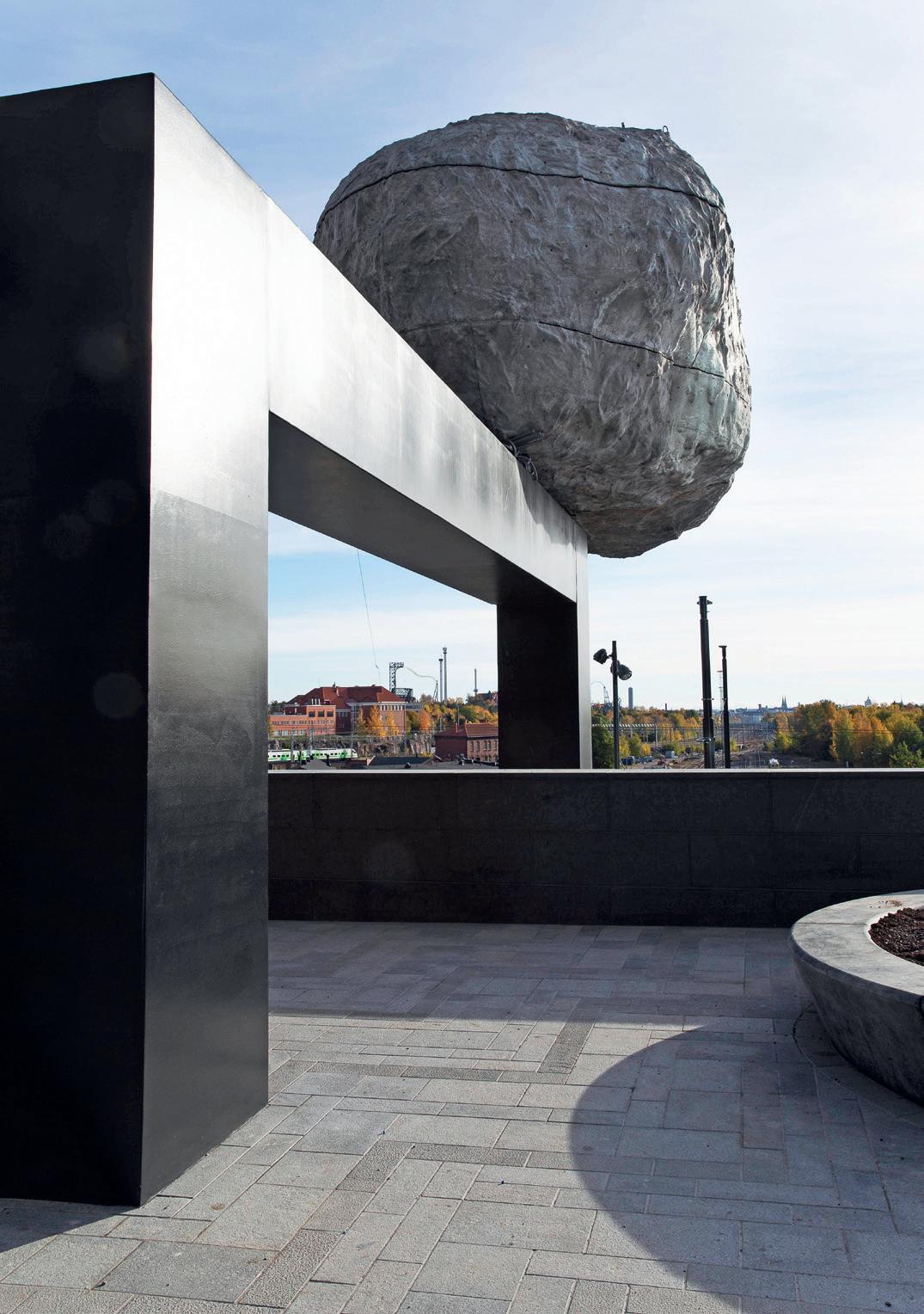Pääkirjoitus Preface
Puheenjohtajan CO2 -tilinpäätös Betoniteollisuus ry:n puheenjohtajuus on modernia pätkätyöläisen hommaa. Minut nimitettiin tähän pestiin 2019 alussa ja kahden vuoden toimikausi lähentyy nyt päätöstään. On aika tehdä kausitilinpäätös. Vuoden 2019 alussa esitin tavoitteeksi CO2-päästöjen alentamista betonirakentamisessa alle puoleen nykytasosta 10 vuodessa sekä pitkällä tähtäimellä kohti nollaa. Tämän näin ja näen edelleen betonialan tärkeimpänä tavoitteena seuraavien vuosien aikana. Kahdessa vuodessa asiassa on tapahtunut huima tiikerinloikka: betoniala otti yhdessä suomalaisen sementtiteollisuuden kanssa tavoitteekseen painaa betonirakentamisen CO2-päästöt nollaan vuoteen 2050 mennessä. Tästä tuli koko toimialaa ohjaava päätavoite. Tavoitteeseen sitoutuminen on johtanut nopeaan kehitykseen, vaikka isojen volyymien prosessiteollisuus liikkuu väistämättä hitaasti suurten teknologiainvestointien ohjaamana. Teknologian taas on oltava valmista ennen sen massamittakaavaan soveltamista. Finnsementti Oy, Suomen sementtialan lipunkantaja ja ainoa valmistaja, on paneutunut työhön tosissaan. Finnsementin Lappeenrannan
The Chairman’s final CO2 account The position of Chairman of the Association of Concrete Industry in Finland is what is fashionably referred to as intermittent work. My twoyear term of office is now about to come to its close. It is time to prepare the final accounts. The goal I specified at the start of 2019 was to reduce CO2 emissions from concrete construction to less than half of the current level in 10 years’ time, and towards zero over the long term. This is one of the most important goals of the concrete industry. We have progressed by leaps and bounds in just two years: together with Finnish cement industry, the concrete sector has set their goal to
ja Paraisten tehtaille on suunnitteilla merkittäviä investointeja, joilla sementin CO2:sta päästään painamaan nopeasti alaspäin. Lappeenrannan Power-to-X pilottihankkeessa hiilidioksidin edistyksellistä hyödyntämistä polttoaineiden raaka-aineena on viety eteenpäin. Samalla kiertotaloutta pystytään edistämään huimasti ja esimerkiksi kohutut tuulivoimaloiden komposiittilavat voidaan jatkossa polttaa turvallisesti suomalaissa sementtiuuneissa. Uusia vähähiilisiä sementtilaatuja kehitetään kiivaasti toimialan yhteistyöllä ja niitä on tulossa markkinoille nopeaan tahtiin. Jopa hiilidioksidin pysyvää talteenottoa sementtitehtaista ja tyhjiin öljykenttiin haudattavaksi, eli ns. CCS-teknologiaa tutkitaan aktiivisesti. Betoniteollisuus on herännyt vahvasti ympäristövastuuseensa ja CO2-hankkeet ovat järjestömme hallituksen jokaisessa kokouksessa. Ensimmäisiä vähähiilisiä betonituotteita on jo tullut markkinoille ja niitä on tulossa lisää. Toimialan oman tuotannon eli lähinnä lämmityksen päästöjä pienennetään aktiivisesti monella tehtaalla. Tästä kehityksestä voimme olla erittäin tyytyväisiä. Silti olemme vasta pitkän tien alussa. Toimialan siirtymässä on jotain samaa kuin sähköautojen esiinmarssissa: ensimmäiset kokeilut veivät aikansa, mutta kun teollisuuden suuri pyörä lähti pyörimään, johtaa se nyt vahvasti kohti täyssähköistä henkilöautoilua 10–20 vuoden tähtäimellä. Sama kehitys on käynnissä betonirakentamisen arvoketjussa ja vauhti kiihtyy. Uskon meidän saavuttavan CO2-neutraalin betonirakentamisen tavoitteen paljon ennen vuotta 2050. Toinen esittämäni haaste koski betonirakentamisen edistämistä kohti modulaarista valmisosatuotantoa, erityisesti kerrostalorakentamisessa. Tässä kehitys on ollut hitaampaa, mutta ensimmäisiä tuotteita nähdään jo markkinoilla. Erityisesti moduulipohjainen märkätilarakentaminen etenee nyt nopeasti ja siitä on tulossa betonialan ”uusi normaali”. Vielä on paljon tuotekehityksen työsarkaa elementtirakentamisen uudessa tulevaisuudessa. Kaksi vuotta on 150-vuotiaan teollisuudenalan historiassa lyhyt jakso. Toimialamme aikaansaama huima kehitysvauhti jatkuu nyt uuden puheenjohtajan Mikael Fjäderin johdolla. Onnea ja menestystä Mikaelille CO2-neutraaliin matkaan!
bringing CO2 emissions from concrete construction to zero by the year 2050. This became the main goal that steers the entire industry. Committing to the goal has brought about rapid development of production technology. Finnsementti Oy, the flag bearer of Finnish cement industry, has especially focused efforts on this work. Finnsementti is planning significant investment at its plants in Lappeenranta and Parainen to make it possible to reduce CO2 emissions rapidly. The Power-to-X pilot project experiments in Lappeenranta with advanced utilisation of carbon dioxide as raw material for fuels. At the same time, circular economy can be promoted significantly; as an example, the composite blades of wind turbines that have caused so much public debate can in the future be safety burnt in Finnish cement kilns. New low-carbon cements are developed in cooperation between operators in the sector and about to be introduced on the market. Even the CCS technology, i.e., the capture of carbon dioxide from cement plants for permanent storage in drained oil fields, is being actively investigated. The concrete industry has strongly accepted its environmental responsibility. The first low-carbon concrete products are already on the market and more are on their way. At many concrete plants active efforts are taken to reduce emissions from heating. I believe that the industry will reach the goal of CO2 neutral concrete construction long before the year 2050. The other challenge I presented was to take concrete construction towards modular prefabrication, particularly for high-rise construction. The development has not been as rapid in this respect. Module-based construction of wet rooms is progressing swiftly and gradually becoming the “new normal” in the concrete sector. However, we still have a lot of work ahead of us in the field of product development to maintain our position at the leading edge of global prefabricated construction in the new future. Two years is a short period in the history of a 150-year old sector of industry. The speed of development experienced in our industry has been staggering, even unforeseen, and it will continue so under the leadership of the new Chairman, Mikael Fjäder. I wish Mikael good luck and great success on the CO2 neutral journey!
Mikko Isotalo Puheenjohtaja, Betoniteollisuus ry
Mikko Isotalo Chairman, Association of Concrete Industry in Finland
4 2020
1 Mikko Isotalo
7

















